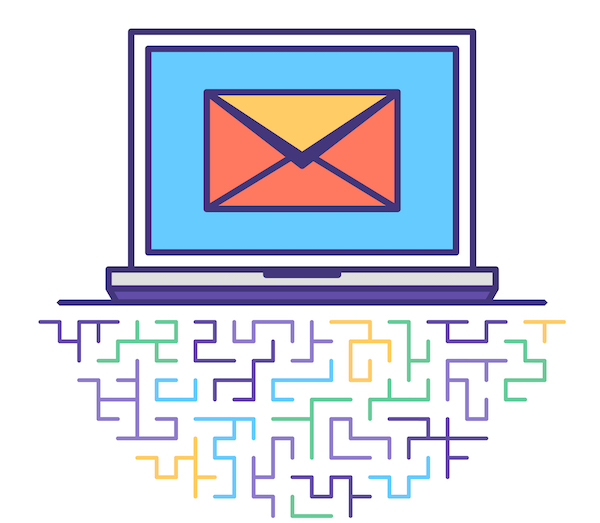Open Season: How to Launch — and Sustain — an E-Newsletter
By Stephanie Vermillion
October 2019
As social media algorithms ebb, flow and ebb some more, companies are struggling to reach their customers with news and product announcements. That’s one of the reasons why owned media like blogs remain valuable. But, while blogs are a smart tactic, customers won’t know to visit that blog unless they’re alerted to a new post.
Enter email newsletters, one of the closest things to “owned social media” that you can have as a company. With email newsletters, you don’t need algorithms in your favor to share an exciting new launch. You have a direct line of communication with customers who willingly agree to stay updated on your business’s news.
That said, even with a willing and eager audience, you still need an email newsletter strategy. You need to brainstorm your format, frequency and overarching goals to make sure every email moves the needle for your company and enriches the lives of your consumers.
Here’s a step-by-step guide on how to do just that:
1. Choose a newsletter service.
You’ll need an email service to launch your company’s newsletter — that much is obvious. But don’t just jump onto the easiest platform and call it a day. Dive into the functionality, features and customer service promises to make sure your newsletter platform can grow with you. (Once you’re signed on, it’s challenging to switch companies.) Some of today’s most popular options include Mailchimp and AWeber.
2. Brainstorm your format.
Just like with social media, your audience will appreciate consistency in your email newsletter format. Choose a few set topic areas or news briefs you’ll include each month — think about a CEO letter, product announcements and staff member introductions. This way, readers will know exactly what they’re getting, and will be more likely to open your note.
3. Don’t get stagnant.
Don’t be afraid to mix up your newsletter every so often, particularly if it benefits the reader. Surprise your audience with coupon codes or free gifts for certain holidays. Give readers a sneak peek at a new product they’ve wanted to test out. Don’t overdo it with one-off emails — you don’t want subscriber numbers to drop — but periodic surprise-and-delight notes can help you build loyalty.
4. Use your subject line wisely.
A simple “Company Newsletter, September” subject line will hardly excite your audience. Instead, think of the most captivating piece of news in your article — perhaps the launch of a product they’ve been championing — and tease it in your subject line. While you’re at it, don’t forget to write something compelling in the preview text (the text that appears right after the subject line) so that your readers are further incentivized to open your note.
5. Set a newsletter schedule — and stick to it.
When it comes to email newsletters, quality trumps quantity. Your customers have cluttered inboxes as it is, and the fact that they provided their email address means they trust you enough not to abuse it.
Instead, set expectations with your newsletter recipients early. Send an automated “thank you” note once they subscribe to your list, and mention how often you send email newsletters. Then, they’ll know when to expect it, and may even look forward to receiving it.
6. Keep it conversational.
The last thing newsletter subscribers want is another jargon-filled email promoting all the great things about your company. There are enough of those out there! Instead, add character to your newsletter. Let it showcase your brand voice and values, and get real with your customers in sections like the CEO note so they can relate to and feel more connected with your brand.
7. Run A/B tests.
It’s easy to finish your email newsletter in the nick of time and hit “send,” but you’ll never improve with this kind of rushed approach. Instead, take the time to work ahead and prepare two email variations so you can see which performs better. With these insights, you can adapt your strategy moving forward.
If two varying newsletters feels like a lot of work, then consider scaling back on distribution frequency so you can make time for strategic analysis. Remember, email newsletters prosper when quality — not quantity — is the goal!



